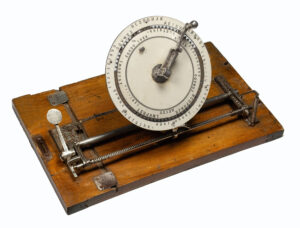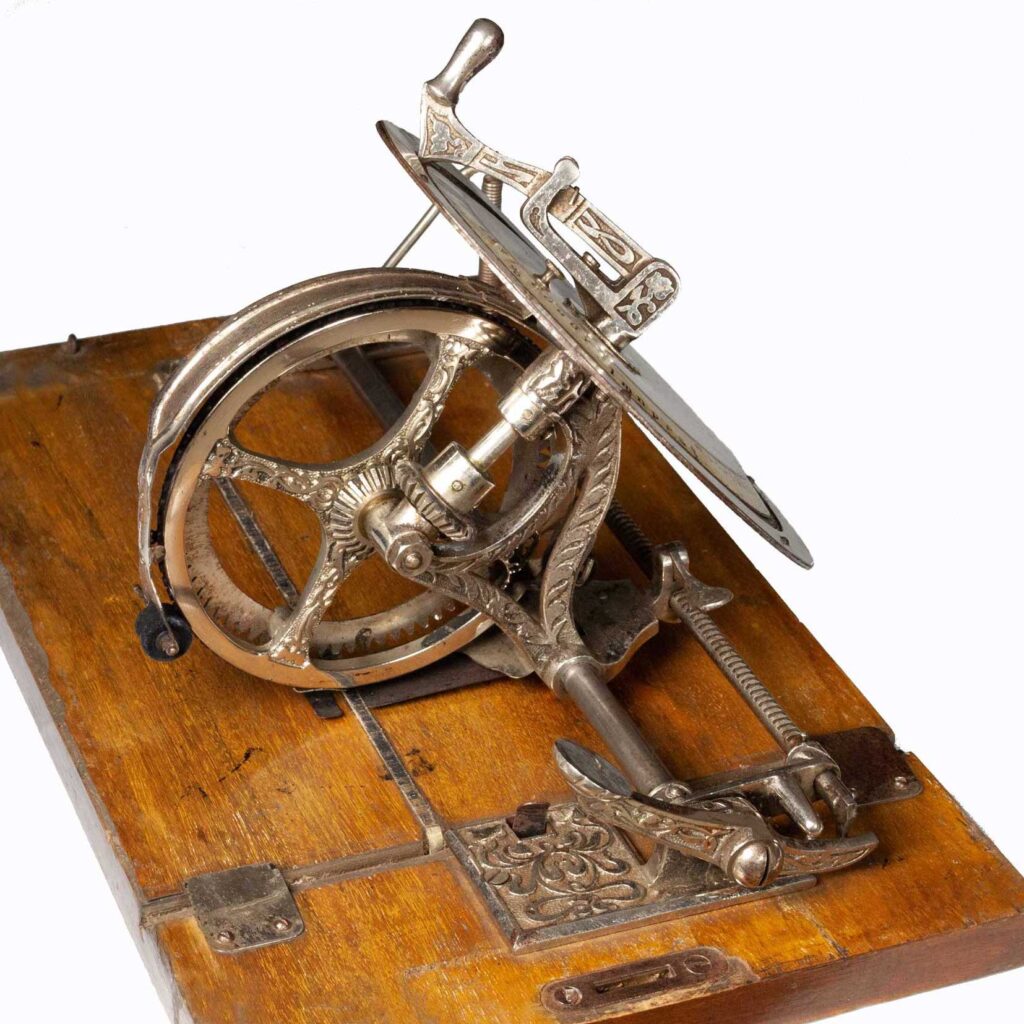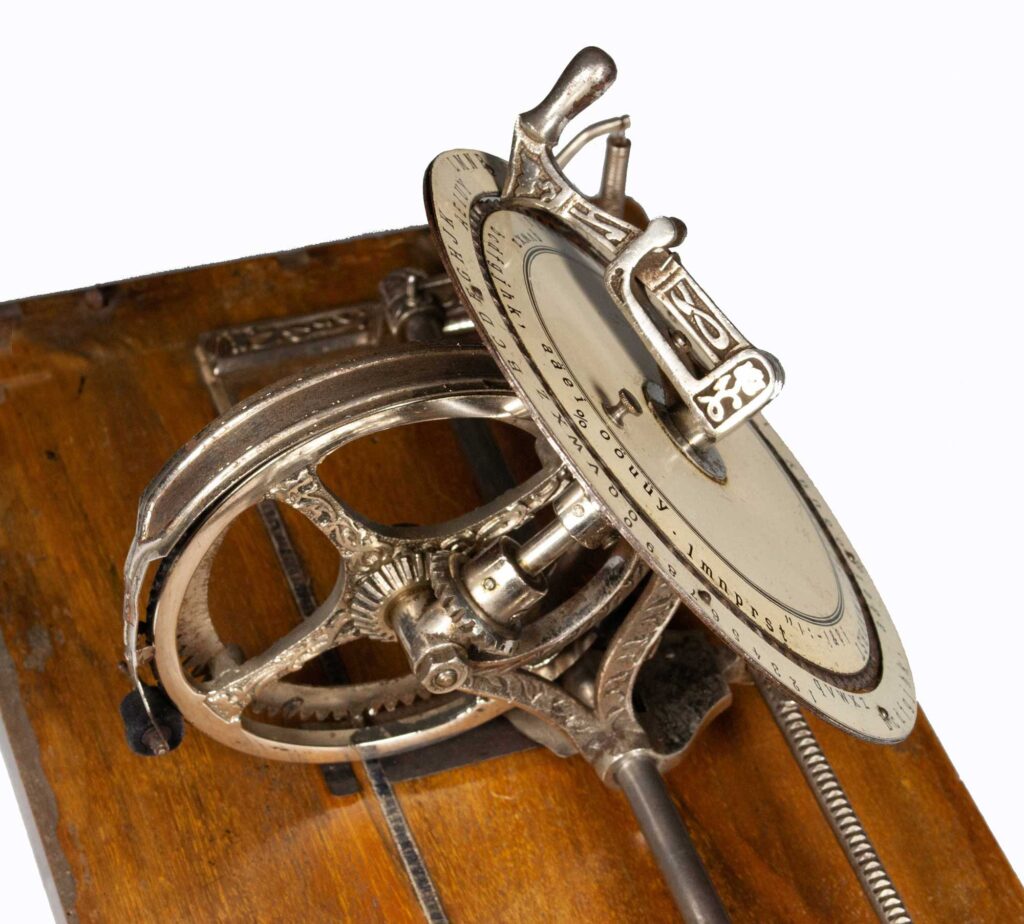The Diskret (“discreet”) is a beautifully engineered typewriter with a remarkable dual purpose: it could be used as a conventional typewriter or as a cipher machine capable of producing coded messages. It ranks among the earliest mechanical devices designed for creating encrypted text.
Its cryptographic ability is explained in the 1899 patent:
“The present invention relates to type-writing machines which can be used for code or secret writing. The invention consists in the arrangement horizontally of two concentric rings, one within the other, each being provided on its surface with letters and signs, which rings can be relatively displaced one with regard to the other according to a prearranged code or system.”
Typing on the Diskret is straightforward: the desired character is selected by rotating the central handle, and then the lever on the left side of the wooden base is pressed to lower the carriage, bringing the vertical typewheel behind the circular index into contact with the paper. Two ink rollers provide inking.
To encode a message, the sender rotates the inner ring to a chosen offset relative to the fixed outer ring. Each letter selected on the inner ring prints its coded equivalent from the outer ring. The recipient, knowing the offset, can reverse the process by reading the outer-ring letters to recover the original inner-ring text.
The Diskret evolved from the Volkschreibmaschine (“People’s Typewriter”) of 1888, produced in Karlsruhe, Germany. The Volkschreibmaschine featured only a single index and had no cipher capability, but its serial numbering appears to have continued into the earliest Diskret machines.
The production of later models moved to Berlin, then Leipzig, under the firm Giernat & Schröter. Diskrets from Berlin and Leipzig can be identified by their ornate decal on the index plate – an embellishment absent from the earlier Karlsruhe examples.





